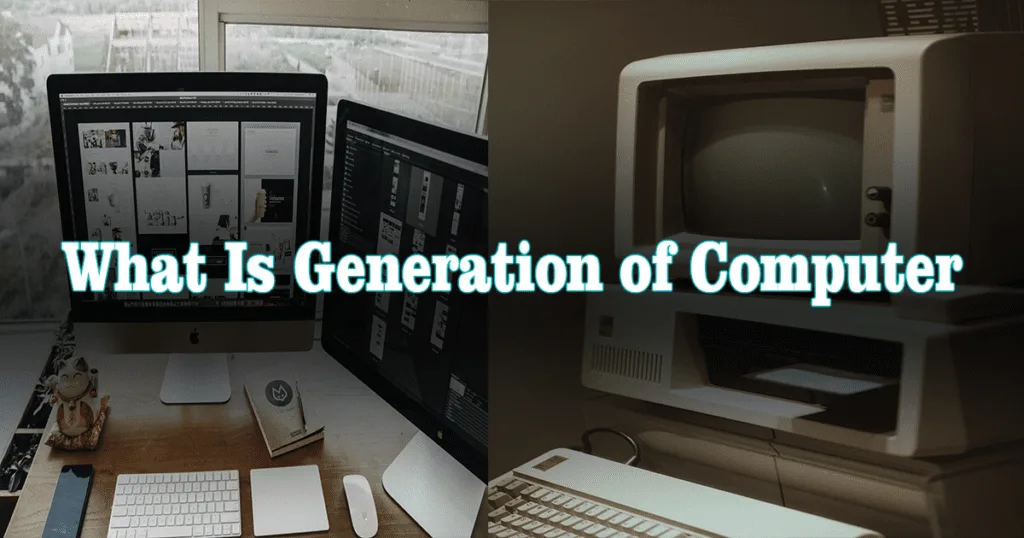The “Generation of Computers” refers to the classification and development stages of modern computer technology, which are categorized into five generations. Each generation represents a significant advancement in hardware and technology. Here’s a brief overview of each generation:
First Generation of Computers
The first computers generation emerged during the 1940s and 1950s. These early computers were large, heavy, and relied on vacuum tubes for processing and magnetic drums for data storage. They were extremely slow and consumed a lot of power. Some notable examples of first generation computers include ENIAC (Electronic Numerical Integrator and Computer) and UNIVAC I (Universal Automatic Computer).
Second Generation of Computers
The second computers generation emerged in the late 1950s and lasted until the mid-1960s. This era saw the use of transistors in place of vacuum tubes, resulting in smaller, faster, and more reliable computers. Transistors were not only more efficient but also generated less heat than vacuum tubes. Additionally, magnetic core memory was introduced, which improved data storage. Notable second Generation computers include the IBM 1401 and the CDC 1604.
Third Generation of Computers
The third generation of computers, which spanned the mid-1960s to the mid-1970s, brought significant advances in integrated circuits (ICs). ICs are composed of many transistors and other electronic components integrated on a single silicon chip. This breakthrough led to the development of smaller, faster and more reliable computers. The introduction of high-level programming languages such as COBOL and FORTRAN made programming more accessible. Notable third generation computers include the IBM System/360 and the DEC PDP-11.
Fourth Generation of Computers
The fourth computers generation emerged in the mid-1970s and continued through the 1980s. This era saw the advent of microprocessors, which combined the processing Power of an entire CPU on a single chip. Microprocessors were faster, more economical, and consumed less power than previous generations of computers. This period also saw the Rise of the personal computer (PC), making computing accessible to individuals and businesses alike. Notable fourth Generation computers include the Apple II, the IBM PC, and the Commodore 64.
Fifth Generation of Computers
The fifth computers generation began in the 1980s and continues to this day. This era is characterized by advances in artificial intelligence (AI) and parallel computing. Fifth-generation computers are designed to perform tasks that require human-like Intelligence, such as natural language processing and problem-solving. Parallel computing allows multiple tasks to be executed simultaneously, further increasing processing speed and efficiency. Notable fifth generation Computers include supercomputers and AI-powered systems.
Conclusion
The computers generation has seen remarkable progress, which has changed the way we live and work. From early vacuum tube-based systems to modern AI-powered Computers, each generation has contributed to the rapid development of computing technology. As we move forward, it is interesting to imagine the possibilities that future Generations of computers Promise for even more advancements and innovations.

